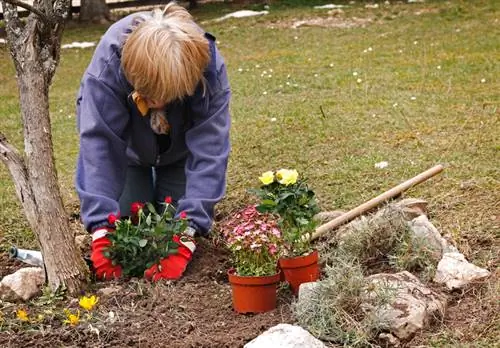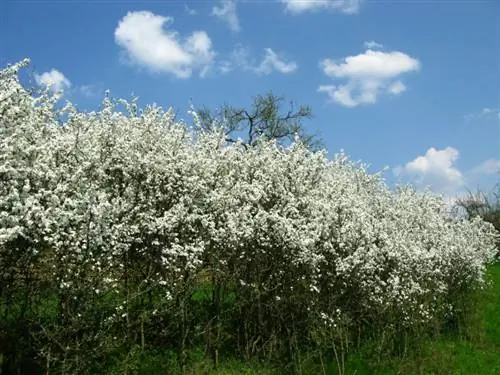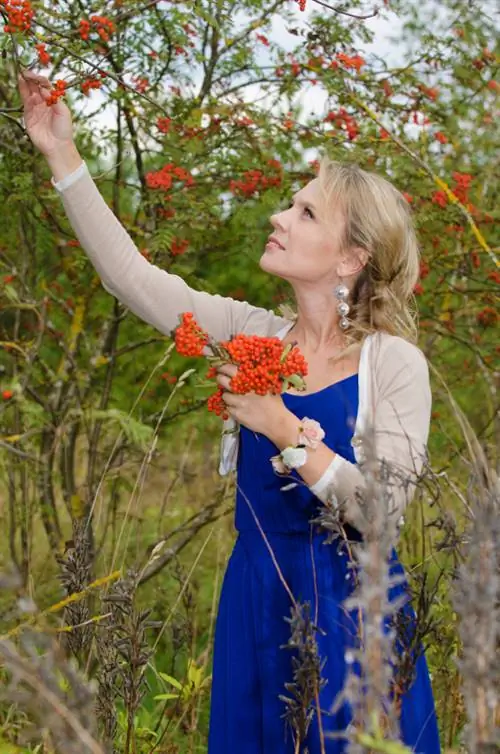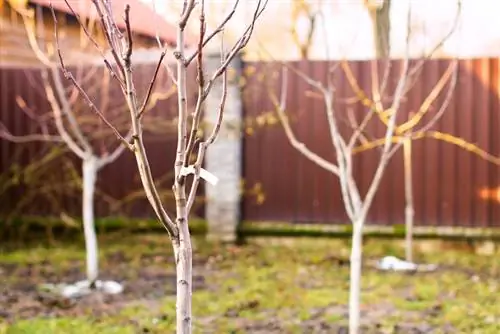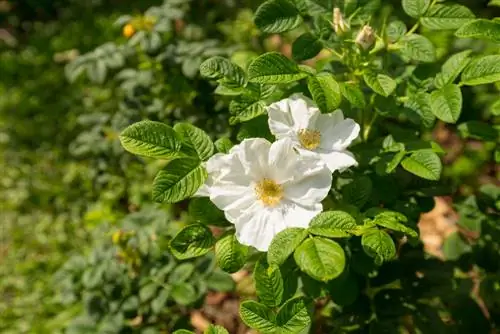- Author admin [email protected].
- Public 2023-12-16 16:46.
- Last modified 2025-01-23 11:20.
A garden without roses is unthinkable! Over the last 2,000 years, thousands of different cultivars have been bred from around 100 different species of wild roses - the first garden roses came from the Near and Middle East via ancient Greece to Central Europe and quickly spread here. There are said to have been over 5,000 different breeds at the end of the last century.
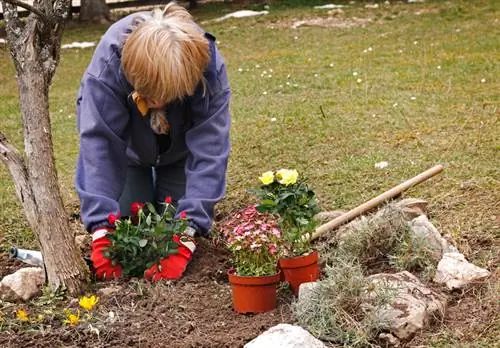
How do I plant roses correctly in the garden?
To plant roses successfully, choose a sunny, airy location with deep, loose, well-drained and nutrient-rich soil. The optimal planting time is from the end of October to November, although the planting distance varies depending on the rose variety. Pot culture and suitable planting partners support the growth and beauty of roses in the garden.
How can roses be used in the garden?
The different types of roses can be used in many different ways in the garden. Instead of another climbing plant, you can plant climbing roses at the entrance to the house, on a trellis, a pergola or the garden house. Bed roses, on the other hand, look very good near the terrace, but also along the paths. They can also be paired very well with other flowering perennials or ornamental grasses. Ground cover roses are suitable for beds and embankments. Depending on the variety, they grow flat or overhanging. The large-flowered noble roses (also known as tea hybrids) are particularly effective as solitary roses, for example in low borders made of boxwood or germander.
Which location should you choose for roses?
Almost all roses prefer a sunny, airy location. Some varieties also thrive in partially shaded places, but roses cannot tolerate shade.
In which soil do roses feel particularly comfortable?
Choose deep, loose, well-drained and nutrient-rich soil for your roses. Loamy soil is particularly suitable for roses, but they also grow in any normal garden soil.
Why shouldn't you plant roses in a location where there were already roses?
There should have been no roses at the chosen location before or there should be at least five years between two rose plantings, as the successor plant threatens to wither due to the onset of soil fatigue. Alternatively, you can also replace the floor.
How to improve the soil before planting?
Before planting, the soil is dug deeply and the upper soil layer is improved with compost (€12.00 on Amazon) or other humus materials (plant or rose soil). However, if the soil is very heavy, it can be loosened up by adding quartz sand.
When is the best time to plant roses?
The best planting time is from the end of October to November. If the ground is open and the weather is mild, you can still plant the roses in December. The second best time is spring, as soon as the ground has dried out. Roses in containers, on the other hand, can be planted almost all year round.
What is the best way to plant roses?
Grafted rose varieties such as noble roses and floribunda roses are planted so deep that the grafting area, which can be seen as a thickening on the root collar, is then about five centimeters below the soil surface. Planting deeper is not positive for development. If the finishing point protrudes from the top, frost damage can easily occur.
How are roses prepared for planting?
Before planting, both bare root and container roses should be placed in a bucket of water overnight so that the roots can soak up water. Bare-root roses should also be pruned at the roots by removing injured or bruised roots. The roots of container roses, on the other hand, are not trimmed, but simply loosened.
What planting distance is optimal for roses?
About six to eight short bed roses are planted per square meter. A distance of 35 to 40 centimeters is sufficient, for stronger-growing varieties up to 50 centimeters (i.e. three to five pieces per square meter). For shrub roses, however, the distance should be between one and two meters. However, if these are to be planted as a rose hedge, then the individual plants should not be more than 50 to 60 centimeters apart. For climbing roses on walls, however, a planting distance of three to four meters is recommended; However, along a fence that is intended to become a dense, blooming rose wall, a distance of around two meters is usually sufficient.
Can you also grow roses in pots?
Many rose varieties are very suitable for growing in pots, especially the rather bushy and small-flowered bed, dwarf or patio roses. These roses usually thrive in pots if they are watered and fertilized regularly - they need plenty of water and nutrients, otherwise they will soon suffer.
What is the best way to propagate roses?
How an older rose bush can be propagated depends on its root authenticity. True-rooted roses can usually be propagated very well vegetatively, but grafted roses can usually only be propagated through inoculation orgrafting. Propagation by sowing is usually only possible with wild roses.
Which plant partners harmonize particularly well with roses?
In a rose garden, the fragrant, white-flowering gypsophila (Gypsophila) is particularly effective. It also looks very pretty if you plant the roses a little further apart in a larger bed and sow the annual white alyssum (Lobularia maritima) in between or add various blue-flowering perennials as partners to the roses, such as catnip, fine rays and larkspur.
Tip
Mediterranean shrubs such as lavender or sage, which are traditionally planted alongside roses, are less suitable due to the very different planting and care conditions.

